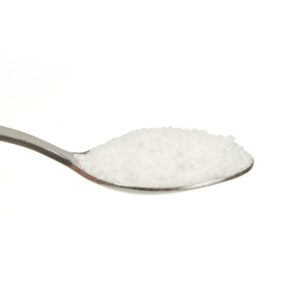
The Role of Sodium Tripolyphosphate (STPP) in Toothpaste: Benefits and Applications
Sodium Tripolyphosphate (STPP) improves toothpaste performance by preventing tartar buildup, removing stains, and protecting tooth enamel.
Sodium Tripolyphosphate (STPP) is an inorganic compound with the formula Na₅P₃O₁₀. It belongs to the family of polyphosphates and functions as a sequestrant, emulsifier, and preservative in various food products. In food technology, STPP is commonly used to improve water-holding capacity, stabilize proteins, and maintain product texture, especially in meat, seafood, and poultry processing.
Chemically, STPP is produced through the thermal condensation of monosodium phosphate and disodium phosphate. Its structure allows it to chelate metal ions such as calcium and magnesium, preventing undesirable reactions during food processing. This chelating property is one of the main reasons it is valuable in maintaining quality and preventing discoloration in processed foods.
STPP has been recognized for decades as a multifunctional additive. Its ability to adjust ionic strength and pH makes it a key ingredient in maintaining product consistency. In seafood, it helps retain moisture and prevents drip loss during thawing. In meat processing, it improves the binding of muscle fibers, leading to better texture and yield.
The primary technological benefits of STPP arise from its physicochemical interactions with proteins and water. It increases the water-binding capacity of muscle tissues, which is crucial for texture and juiciness in cooked products. Additionally, STPP stabilizes emulsions in processed foods such as sausages and restructured meats.
In seafood applications, particularly shrimp and fish fillets, STPP reduces thawing loss and maintains a firm, appealing texture after cooking. It also acts as a buffer to control pH, typically maintaining it around 6.5–7.0, which optimizes protein solubility.
Another important role is its sequestrant action, which prevents the oxidation of fats and pigments by binding metal ions. This delays rancidity and preserves color in processed meats. These technical functions make STPP one of the most efficient and cost-effective additives in large-scale food manufacturing.
However, its usage must be controlled. Excessive STPP may cause undesirable textural or sensory effects, such as a soapy taste or overly firm texture. Furthermore, food technologists monitor phosphate levels to ensure compliance with regulatory limits and maintain product safety.
STPP is permitted in food by multiple international agencies under specific concentration limits. The Joint FAO/WHO Expert Committee on Food Additives (JECFA) has established an Acceptable Daily Intake (ADI) of 70 mg/kg body weight expressed as phosphorus. The European Food Safety Authority (EFSA) and the U.S. Food and Drug Administration (FDA) also allow STPP use as a multipurpose additive, classified as “generally recognized as safe” (GRAS) when used within prescribed limits.
Maximum allowed concentrations vary depending on the product type. For example, in processed meats, total added phosphates typically must not exceed 0.5% expressed as phosphorus pentoxide (P₂O₅). In seafood, permissible levels are determined by weight gain after soaking or treatment, ensuring that phosphate use does not artificially inflate product mass.
Labeling requirements in most jurisdictions mandate that STPP appear as either “sodium tripolyphosphate” or “E451(i)” on ingredient lists. While these standards are consistent globally, some countries have recently reviewed phosphate regulations due to emerging nutritional concerns, particularly regarding high phosphate intake and its link to kidney function.
All quantitative information above is based on regulatory standards available as of 2024; verification from the latest Codex Alimentarius or EFSA documentation is recommended for up-to-date values.
Public interest in STPP has fluctuated over the past decade, primarily influenced by media coverage and regulatory debates about phosphate safety. Based on Google Trends data (to be verified for exact values), global search volume for “sodium tripolyphosphate in food” increased significantly around 2020–2022, coinciding with renewed discussions about additives in seafood imports and processed meats.
Interest tends to spike whenever consumer awareness of food additives rises, often triggered by social media discussions or food labeling controversies. Query patterns show that searches increasingly combine terms such as “is sodium tripolyphosphate safe”, “STPP-free shrimp”, and “phosphate alternatives”.
In contrast, professional interest from the food technology sector remains relatively stable, as STPP continues to play an indispensable role in product formulation. Academic publication data from food science journals also indicate a gradual increase in research focusing on phosphate replacement technologies and sustainable processing aids.
This dual pattern—consumer skepticism alongside technical reliance—illustrates the growing need for transparent communication between food technologists and the public.
Consumer perception of STPP is shaped by a combination of scientific misunderstanding and online misinformation. Many people equate STPP with synthetic chemicals perceived as harmful, despite its controlled and well-studied use. Public concern often focuses on the belief that phosphates are “water retainers” that artificially increase food weight.
While technically correct in part, this ignores the functional role of STPP in preserving texture and quality. Food industry responses have included more transparent labeling, as well as efforts to develop “clean label” alternatives. Some manufacturers have shifted to naturally derived or phosphate-free solutions, though these often result in higher production costs and shorter shelf lives.
Industry associations emphasize that STPP’s safety profile remains well-established under regulated conditions. However, its nutritional implications—particularly for individuals with kidney disease—continue to be studied. A balanced communication strategy, supported by factual data, is essential to rebuild consumer trust while maintaining technical standards.
The future of STPP in food processing depends on innovation, regulation, and consumer perception. Researchers are exploring alternative compounds, such as calcium citrate or enzymatic treatments, that mimic phosphate functionality without the same health concerns.
Additionally, digital analytics on search trends offer insights into shifting public sentiment. Food companies can use this data to guide labeling strategies and educational outreach, ensuring that consumers understand the difference between misuse and safe application.
From a technical standpoint, further study is warranted on the long-term stability of phosphate-treated foods and the environmental impact of phosphate discharge from food processing plants.
While STPP remains a cornerstone additive for water retention and texture control, future development must balance technological performance, safety, and sustainability.

Sodium Tripolyphosphate (STPP) improves toothpaste performance by preventing tartar buildup, removing stains, and protecting tooth enamel.
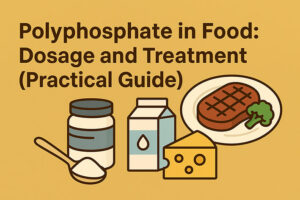
Polyphosphates are typically used in the food sector for their capability to improve the texture, look, and service life of numerous items.

Sodium tripolyphosphate (STPP) serves as a highly effective water softener, detergent builder and food preservative across multiple industries.
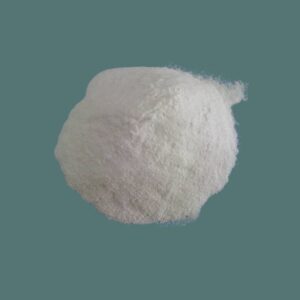
Toxicological studies and global regulations are reshaping the future of sodium tripolyphosphate, once hailed as a chemical miracle in detergents.
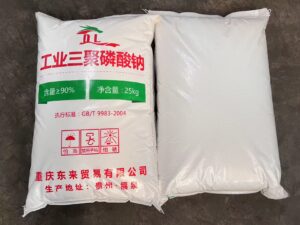
Sodium Tripolyphosphate (STPP): A detailed analysis of its chemical properties, industrial uses, and essential safety guidelines for handling and application.

Sodium Tripolyphosphate (STPP) revolutionized detergents but caused eutrophication. Discover its history, environmental bans, and modern phosphate-free alternatives.
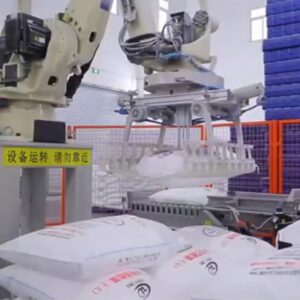
From raw phosphate rock to market dominance, sodium tripolyphosphate is evolving through process innovation, cost control, and global industrial competition.

Sodium Tripolyphosphate Environmental Impact: A deep dive into STPP-induced water eutrophication and effective wastewater treatment solutions to mitigate pollution and protect ecosystems.
Factory‑direct supply of food‑grade STPP with free samples, fast delivery and certified quality for global food‑processing applications

This guide provides insights into the technological advances, regulatory frameworks, and cost factors affecting food and aquatic products, highlighting sustainability challenges and opportunities in 2025.

This guide covers the uses, benefits, risks, dosages, and health concerns of polyphosphates in food, with an overview of regulatory standards and emerging alternatives.

This article examines how raw‑material purity, plant upgrades, and regulatory trends shape the global supply and capacity outlook for food‑grade sodium tripolyphosphate.

Global food-grade sodium tripolyphosphate (STPP) prices in Q4 2025 remain stable with slight increases driven by higher energy and logistics costs, while demand from meat and seafood processing sustains market balance.

Global food-grade sodium tripolyphosphate (STPP) prices in Q4 2025 remain stable with slight increases driven by higher energy and logistics costs, while demand from meat and seafood processing sustains market balance.

Sodium tripolyphosphate (STPP) remains an essential multifunctional additive in food processing.

Overview of Sodium Tripolyphosphate (STPP) in Food Applications
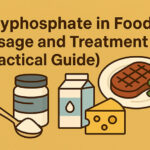
Polyphosphates are typically used in the food sector for their capability to improve the texture, look, and service life of numerous items.

Sodium tripolyphosphate (STPP) and various other phosphate ingredients prevail in today’s food landscape– but just how much do we truly know about what we’re taking in?
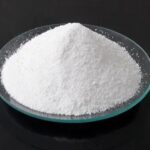
Sodium Tripolyphosphate (STPP) serves as a crucial food additive that improves texture, moisture retention and shelf life in processed seafood and meat products.

Sodium tripolyphosphate improves food texture, yield, and shelf life, making it a vital additive in industrial food processing.
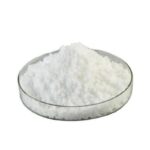
Sodium tripolyphosphate boosts food yield and texture but faces rising scrutiny over health and safety, prompting regulation and innovation across the industry.

Food Grade Sodium Tripolyphosphate: A detailed purchase guide comparing suppliers and highlighting its essential applications in the food industry.
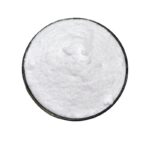
Sodium tripolyphosphate (STPP) is widely used as a food additive in processed foods—international authoritative organizations such as the FDA and WHO have recognized its safety. However, the Acceptable Daily Intake (ADI) standard must be followed, and consumers can make scientific choices by reading the ingredient list.

Sodium tripolyphosphate (STPP) is a common chemical compound used in detergents, food processing, and industrial applications.
WhatsApp us